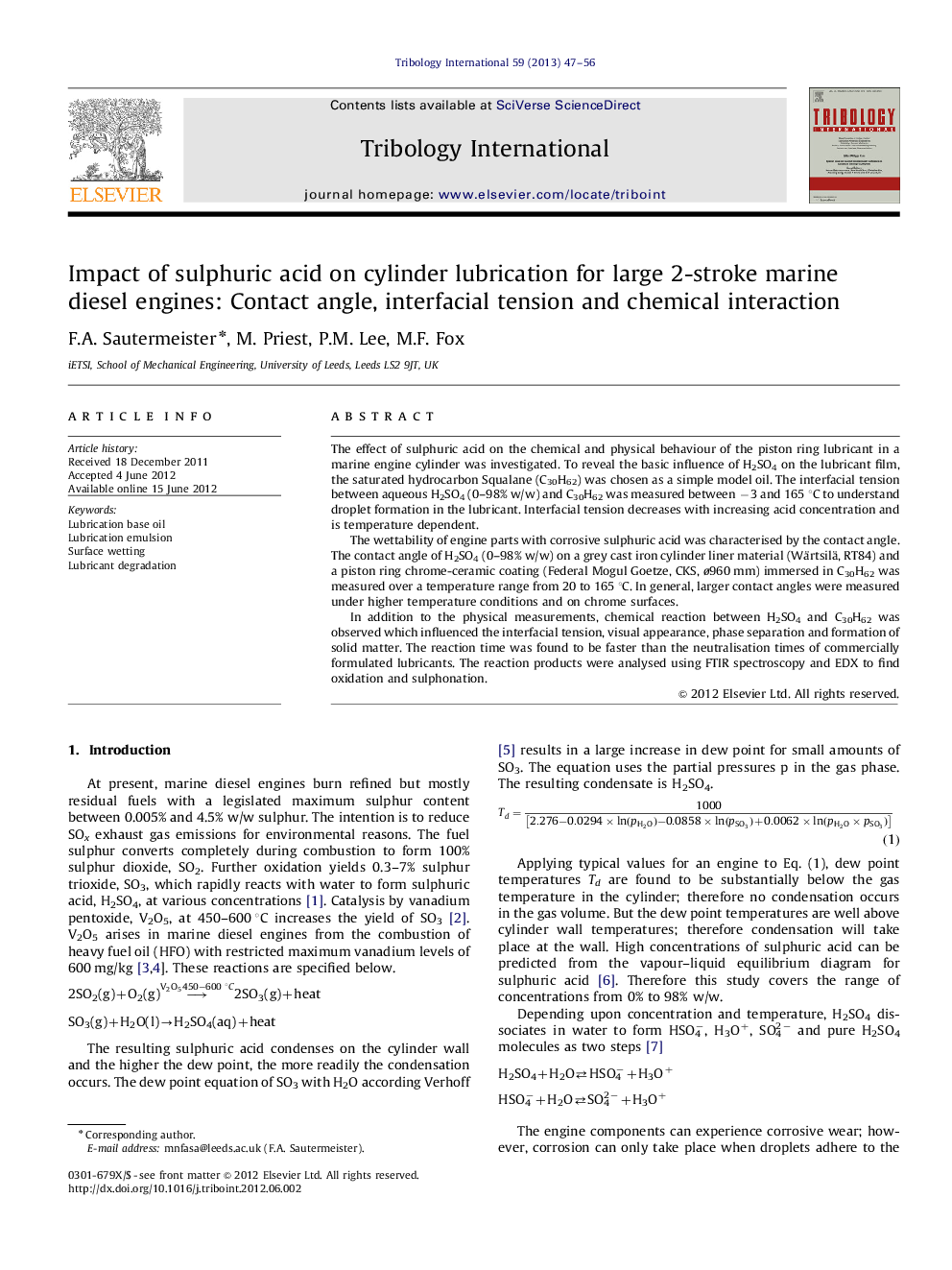| Article ID | Journal | Published Year | Pages | File Type |
|---|---|---|---|---|
| 615070 | Tribology International | 2013 | 10 Pages |
The effect of sulphuric acid on the chemical and physical behaviour of the piston ring lubricant in a marine engine cylinder was investigated. To reveal the basic influence of H2SO4 on the lubricant film, the saturated hydrocarbon Squalane (C30H62) was chosen as a simple model oil. The interfacial tension between aqueous H2SO4 (0–98% w/w) and C30H62 was measured between −3 and 165 °C to understand droplet formation in the lubricant. Interfacial tension decreases with increasing acid concentration and is temperature dependent.The wettability of engine parts with corrosive sulphuric acid was characterised by the contact angle. The contact angle of H2SO4 (0–98% w/w) on a grey cast iron cylinder liner material (Wärtsilä, RT84) and a piston ring chrome-ceramic coating (Federal Mogul Goetze, CKS, ø960 mm) immersed in C30H62 was measured over a temperature range from 20 to 165 °C. In general, larger contact angles were measured under higher temperature conditions and on chrome surfaces.In addition to the physical measurements, chemical reaction between H2SO4 and C30H62 was observed which influenced the interfacial tension, visual appearance, phase separation and formation of solid matter. The reaction time was found to be faster than the neutralisation times of commercially formulated lubricants. The reaction products were analysed using FTIR spectroscopy and EDX to find oxidation and sulphonation.
► Measured interfacial tension between sulphuric acid and squalane. ► Interfacial tension correlates to dissociation of sulphuric acid. ► Measured contact angle of sulphuric acid submerged in squalane on chrome. ► Measured contact angle of sulphuric acid submerged in squalane on grey cast iron. ► H2SO4 degrades C30H62, depending on concentration, temperature and exposure time.
